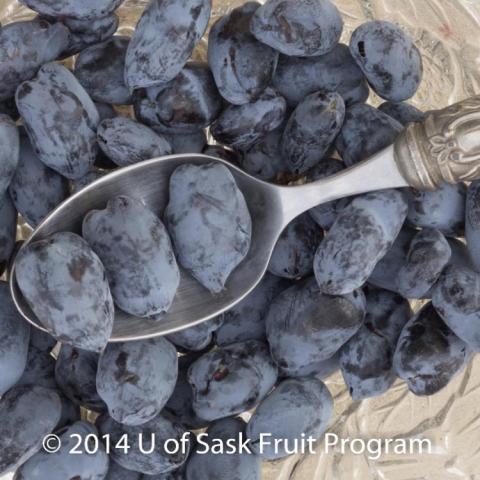About Yezberry Maxie
Olive-shaped berries are sweet and juicy. The largest we've seen. Flowers can withstand early spring frosts. Developed in the U.S. from a Japanese variety. “Yez” refers to the northern Japanese island now called Hokkaido.
“Unlike blueberries, the color of haskaps does not indicate their ripeness. The fruits turn blue as early as two to three weeks before they are ready to be picked, at a crucial time when the sugars are accumulating in the fruits. Those picked too early will be quite sour, but those picked when they are ready will fall off in your hand and are melt-in-your-mouth delicious.” Source
About Honeyberry
Yellow flowers in early spring turn into pairs of tangy-sweet tubular blue fruit with crimson flesh. Often compared to blueberries, but with quadruple the level of anthocyanin and triple the antioxidants. Retains flavor fresh, frozen, or dried. Requires two varieties that bloom together for pollenization, planted within 100'. Acclimated to the winters of Russia, Japan, and Canada and accepts a wide range of soil. Protect from rabbits in winter. Also called haskaps, meaning "many fruits on branches," by the Indigenous Ainu people of Hokkaido.





